Supporting imagery
Model
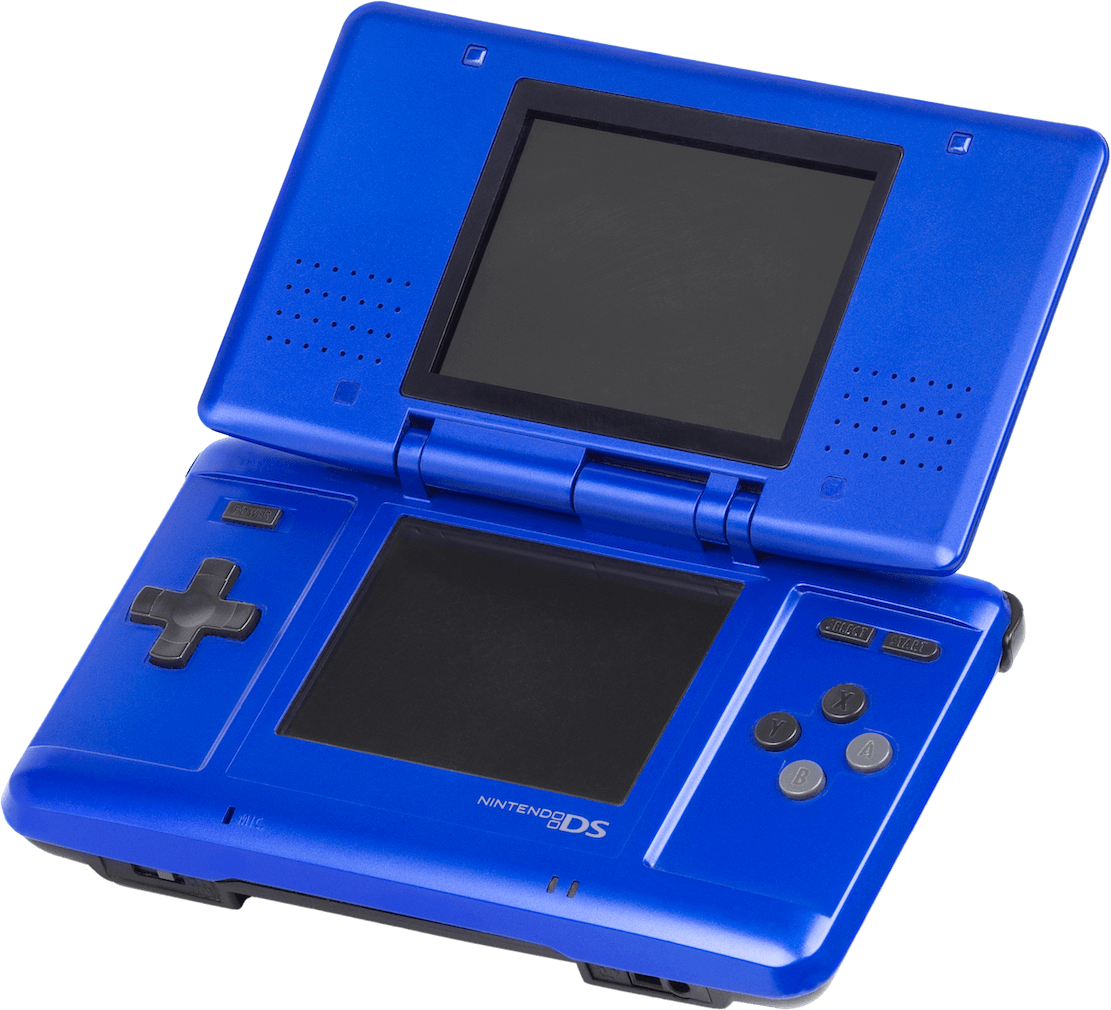
Released on 21/11/2004 in America, 02/12/2004 in Japan and 11/03/2005 in Europe.
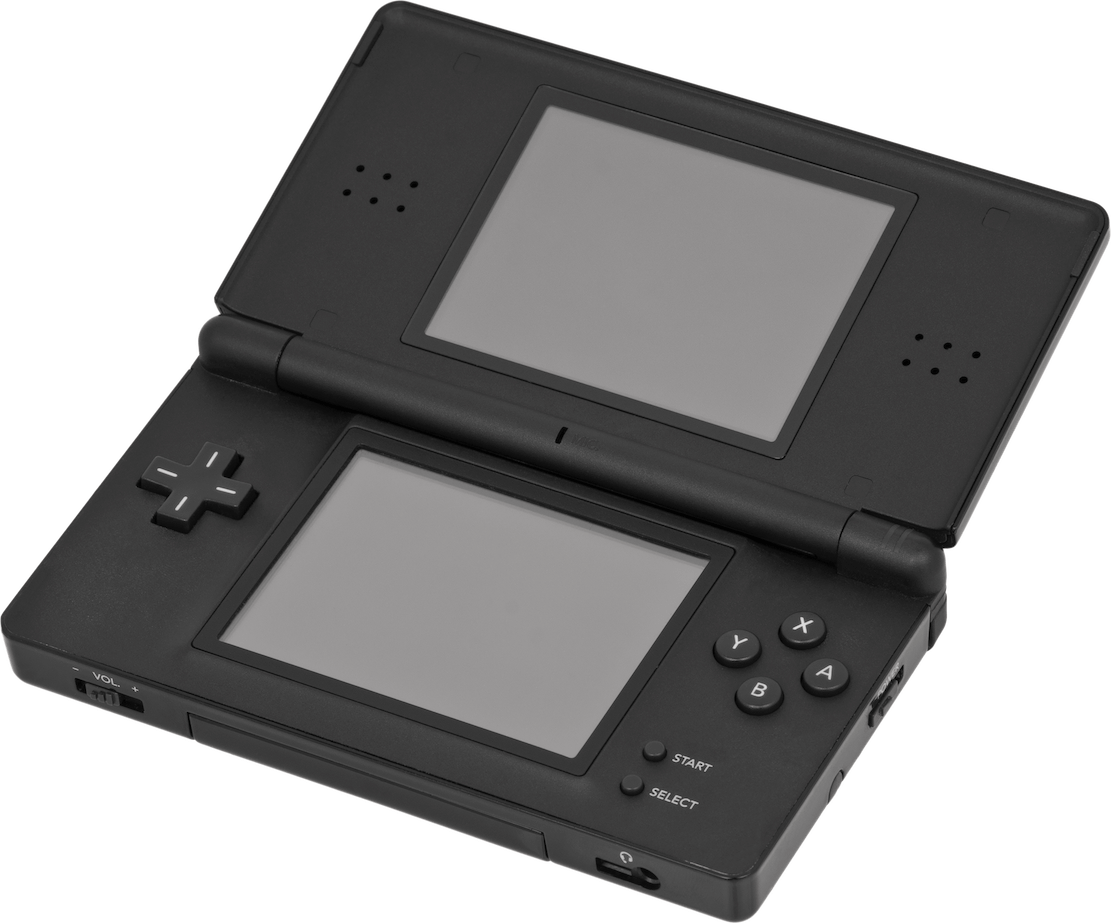
Released on 02/03/2006 in Japan, 11/06/2006 in America and 23/06/2006 in Europe.
Motherboard
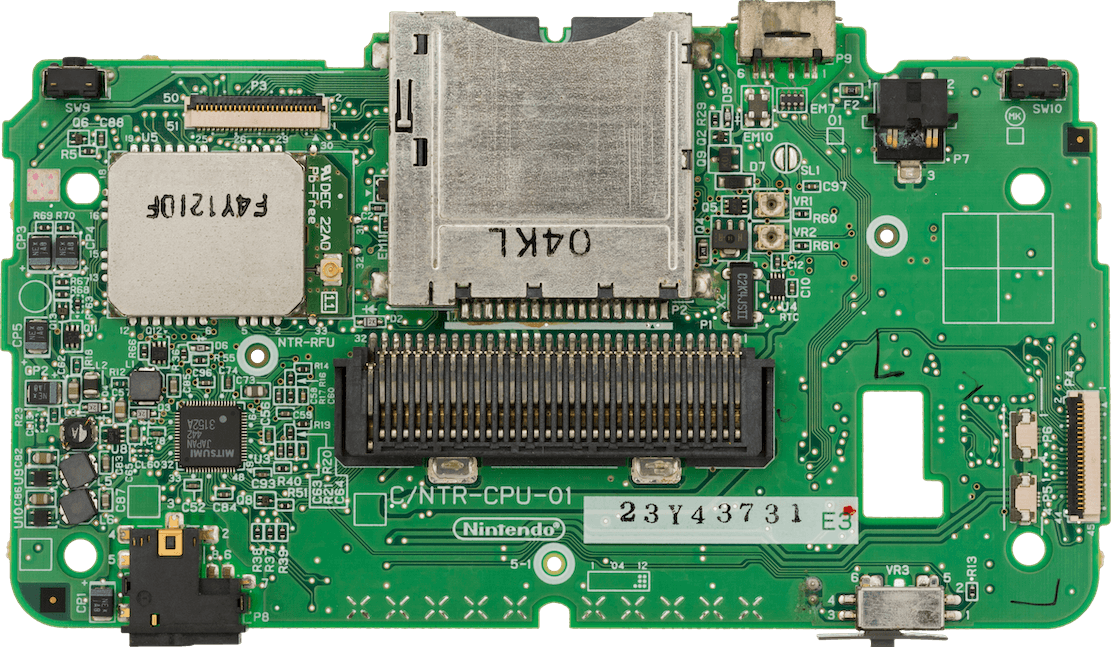
Showing first revision.
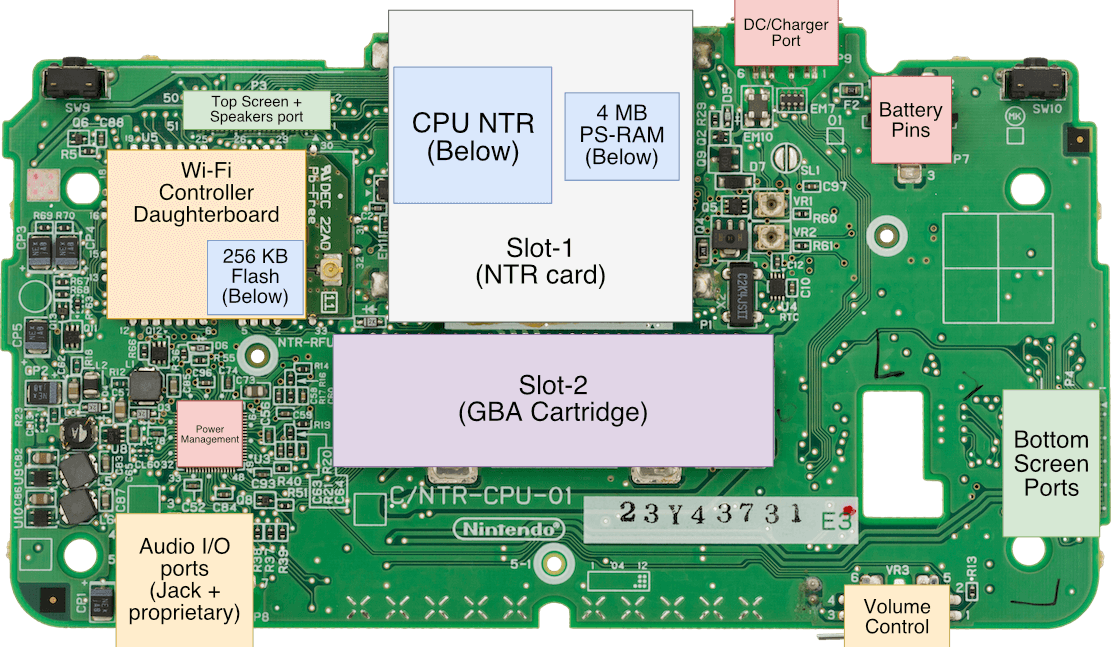
Diagram

If you have trouble following the components: Top is only accessed by ARM9, bottom section is ARM7-only, middle section is shared.
A quick introduction
This console is an interesting answer to many needs that weren’t possible to fulfil in the handheld ecosystem. There will be some innovation and a few compromises, but this combination may pave the way for new and ingenious content.
CPU
As with Nintendo’s previous portable console, the system revolves around a big chip named CPU NTR. ‘NTR’ is shorthand for Nitro, the codename of the original Nintendo DS. This SoC is also the continuation of a prosperous Nintendo-ARM partnership, which originally started with the Game Boy Advance.
Now, before we check out the new CPUs, let’s look at how ARM evolved during the late 90s, as this impacted the technology ultimately found inside the Nintendo DS.
ARM’s new territories
During the mid-90s, ARM was experiencing an influx of businesses from the mobile market (before cellphones became ‘smart’). Yet, it struggled to please a particular sector: high-performance computing. The ARM7 was enjoyed by many mobile devices, but it didn’t quite satisfy Apple (with its ‘Newton’ PDA line) and Acorn (with its RiscPC line), both of whom shipped software that could benefit from a faster CPU. Aside from the lack of a 64-bit solution (something MIPS was already commercialising), ARM was also unable to produce a CPU that operated faster than 40 MHz. Altogether, the bottlenecks were starting to pile up.
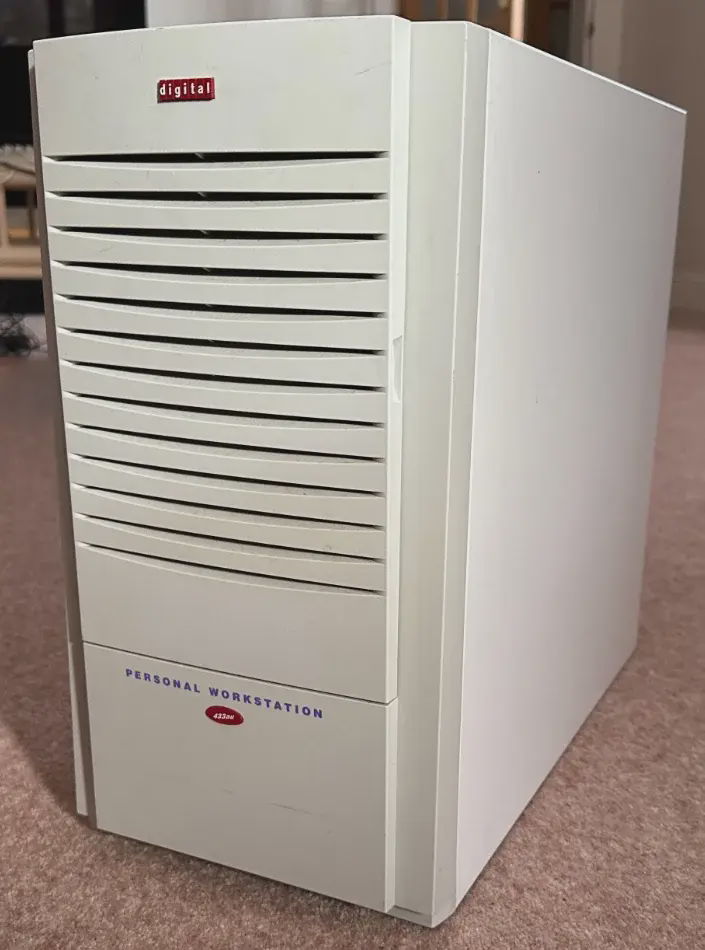
Nevertheless, during the commercialisation of the ARM7 line, ARM had already started work on a successor called ARM8, the first attempt into the high-performance market. Coincidentally, Digital Equipment Corporation (DEC), the American company historically famous for their line of PDP and VAX machines (the so-called ‘minicomputers’) along with the sophisticated VMS operating system, was experiencing an opposite problem: They struggled to deliver a low-power CPU based on their high-performance solutions.
Well, it so happened that ARM’s licensing model turned into an opportunity for DEC, who chose to develop a new CPU by borrowing materials from ARM (its instruction set and microarchitecture).
In the end, DEC grabbed the datapath design of their RISC-based Alpha processor and, with the help of ARM, mixed it with ARM’s microarchitecture [1]. This collaboration led to the StrongARM CPU, which was released in 1996 and targeted the performance sector.
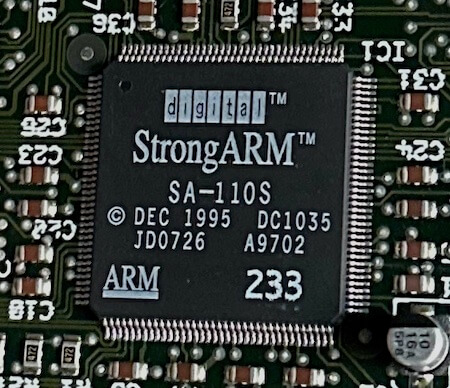
StrongARM was a new ARM-based CPU that featured [2]:
- The ARMv4 instruction set. If you want to know more about it, I’ve previously analysed it in the Game Boy Advance article.
- Up to 233 MHz of clock speed, roughly 583% faster than the beefiest ARM7 chip.
- 5-stage pipeline, an increment from the original 3-stage design.
- A new cache system implementing a Harvard architecture, where 16 KB are allocated for instructions and another 16 KB for data.
- This design helped alleviate memory bottlenecks (something the von Neumann/Princeton model suffered from).
It’s worth mentioning that this chip still managed to work with a 3.3 V supply, like previous ARM chips. In fact, the StrongARM needs 2 Volts and only dissipates 1 W [3]. By contrast, Intel’s 200 MHz Pentium chip pulls 3.5 V and has a power dissipation of up to 15.5 W [4].
As expected, Acorn and Apple were so dazzled by the new chip that they immediately shipped CPU upgrades and further Newton models, respectively, using DEC’s invention.
In the same year, ARM also released their promised ARM8-based CPU, the ARM810. It was comparably slower and offered no practical advantages over the StrongARM. So, too little and too late resulted in no commercial interest. Consequently, ARM moved on to improving the ARM7 line for the mobile market. However, the potential of DEC’s CPU was so disruptive that ARM Holdings absorbed StrongARM’s design [5] to produce their next line of CPUs, the ARM9 (which the Nintendo DS houses).
Turning points
Thanks to the StrongARM, ARM also cemented its position in the handheld market, completely displacing MIPS and SuperH as viable alternatives. From then on, ARM was en route to become the most adopted architecture for mobile devices [6].
Unfortunately for DEC, this CPU will be their last major achievement before being acquired by Compaq in 1998. The fate of StrongARM would then be in the hands of Intel, who continued development under the new ‘Intel XScale’ line… until they liquidated the division to focus on ‘low-power’ x86 CPUs (i.e. the Intel Atom) [7]. 15 years later, not only Intel has lost its chance in the mobile market, but now they furiously find themselves running head-to-head against ARM in the desktop arena.
Nintendo’s debuting SoC
Aside from the aforementioned advancements, CPU NTR also bundles an interesting multi-processor architecture using two different ARM CPUs, the ARM7TDMI and the ARM946E-S. This design was done before ARM Holdings officially released multi-processor solutions. So, their functioning may be considered a bit unorthodox (taking into account the present technology available).
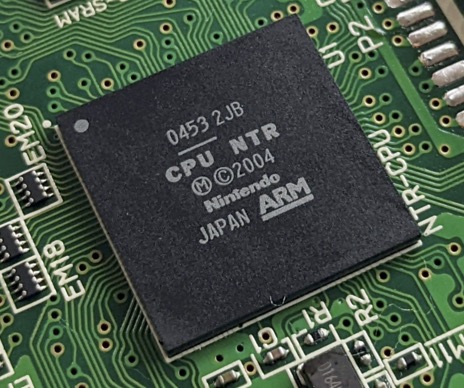
While this is not the first parallel system analysed for this series, its design is very different from the rest. For instance, we are not talking about the ‘experimental’ master-slave configuration that the Saturn debuted or the ‘co-processor’ approach found on the PS1 or N64. The Nintendo DS includes two very independent computers that will perform exclusive operations, each one having a dedicated bus. This design methodology is called asymmetric multiprocessing and the resulting CPUs’ co-dependency will condition the overall performance of this console.
Let’s now take a look at the two CPUs.
ARM7TDMI
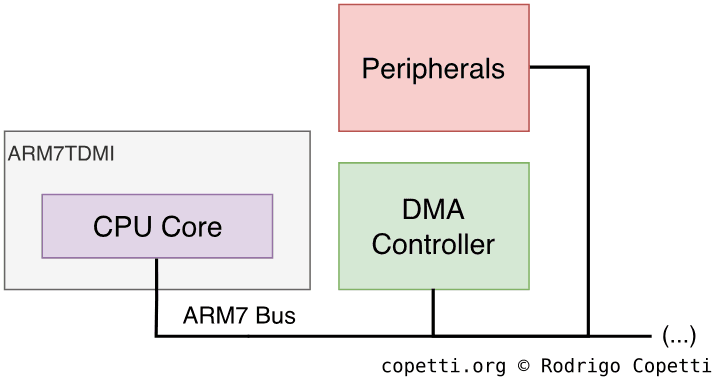
Starting with the more familiar one, the ARM7TDMI is the same CPU found on the Game Boy Advance but now running at ~34 MHz (double its original speed). It still includes all its original features (especially Thumb).
Now for the changes: Because Nintendo’s engineers placed the ARM7 next to most of the I/O ports, this CPU will be tasked with arbitrating and assisting I/O operations. In fact, no other processor can directly connect to the I/O. As you can see, this is not the ‘main’ processor that will be in charge of the system, but rather the ‘sub-processor’ offloading the main CPU by passing data around many components.
ARM946E-S

Here is the ‘main’ CPU of the Nintendo DS, the ARM946E-S. It runs at ~67 MHz, so not exactly ‘StrongARM speed’. Yet, being part of the ARM9 series, this core in particular not only inherits all the features of the ARM7TDMI and StrongARM, but also includes some additional bits you may find interesting [8]:
- The ARMv5TE ISA, an extension of the previous ARMv4 ISA and Thumb, including more instructions and a faster multiplier.
- If you take a look at the core name, the letter ‘E’ means Enhanced DSP which implies that lots of these new instructions have to do with applications for signal processing.
- The extended Thumb is sometimes called Thumb v2. It adds
BLXandBKPT, which assists the switching between ARM and Thumb mode; and facilitates debugging, respectively.
- 5-stage Pipeline, like the StrongARM and ARM8 line.
- 12 KB of L1 Cache: The core now features cache (originally lacking in the ARM7TDMI) and, akin to the Hardvard-based StrongARM, 8 KB are allocated for instructions and 4 KB for data.
- The cache employs a write buffer mechanism where RAM is updated asynchronously, so the CPU can work on other tasks.
- 48 KB of Tightly-Coupled Memory or ‘TCM’: Similar to Scratchpad memory. Although, this one discriminates between instructions (32 KB) and data (16 KB).
- An integrated CP15 co-processor. It acts as a Memory Protection Unit (MPU), stipulating which memory ranges can be accessed, cached and/or written to.
Nintendo also added the following components around it:
- A Divider and Square root unit to speed up these types of operations, as the ARM9 by itself is not capable of performing this type of arithmetic.
- A Direct Memory Access Controller: Accelerates memory transfers without depending on the CPU. Combined with the use of cache, both CPU and DMA can potentially work concurrently.
- Cache and DMA can provide a lot of performance but also create new problems, such as data integrity and coherence. So, programmers will have to manually maintain memory consistency by flushing the write buffer before triggering DMA, for instance.
I guess with hardware like this, it’s easy to figure out the real reason kids loved this console, eh?
Interconnection
So far I’ve talked about how the two CPUs work individually. But to work as a whole, they are required to cooperate constantly. To accomplish this, both CPUs directly ‘talk’ to each other using a dedicated FIFO unit [9], this block of data holds two 64-byte queues (up to 16 elements) for bi-directional communication.

This works as follows: The ‘sender’ CPU (that effectively needs to send the other a message) places a 32-bit block of data in the queue, and the CPU acting as a ‘receiver’ can then pull that block from the queue and perform the required operations with it.
Whenever there’s a value written on the queue, either CPU can fetch it manually (polling) however, this requires constantly checking for new values (which can be expensive). Alternatively, an interrupt unit can be activated to notify the receiver whenever there’s a new value in the queue.
Main memory
Just like its predecessor, RAM is spread around many different locations, enabling it to prioritise data placement by access rate. In summary, we have the following general-purpose memory available:
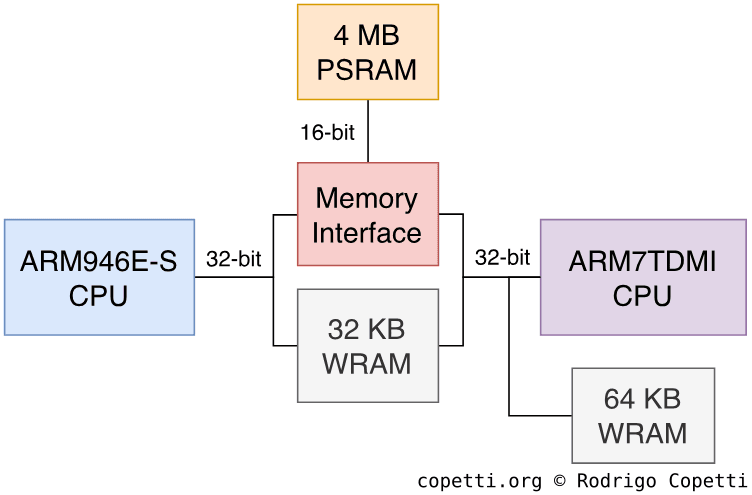
- 32 KB of WRAM (Work RAM) using a 32-bit bus: To hold fast data shared between the ARM7 and ARM9.
- Bear in mind that only one CPU can access the same address at a time.
- 64 KB of WRAM using a 32-bit bus: For fast data as well, but only accessible from the ARM7, like the GBA had.
- 4 MB of PSRAM using a 16-bit bus: A slower type, available from either CPU and it’s controlled by a memory interface unit.
- Pseudo SRAM or ‘PSRAM’ is a variant of DRAM that, by contrast, performs refreshes from within the chip. Therefore, behaving like SRAM (the faster, but more expensive alternative to DRAM). This design reminds me of 1T‑SRAM.
Backwards compatibility
Even though the architecture is significantly different from its predecessor, it still managed to maintain the critical bits that would grant it native compatibility with Game Boy Advance games.
But for the DS to revert to an ‘internal’ GBA, the former includes a set of software routines that set the console in AGB Compatibility Mode. In doing so, it effectively halts the ARM9, disables most of the ‘special’ hardware, redirects the buses, puts the ARM7 in charge and slows it down at 16.78 MHz. Finally, the ARM7 proceeds to boot the original AGB BIOS which bootstraps the GamePak cartridge (just like an original Game Boy Advance). This mode still exhibits some features not found in the original console, such as displaying the game with black margins (we’ll see in the next section that the new screen resolution happens to be bigger). Moreover, since the DS has two screens, users can set which screen will be used to display the GBA game.
Once in GBA mode there’s no going back, the console must be reset to re-activate the rest of the hardware.
Unused Power
With so many sophisticated components fitted in a single and inexpensive chip, it’s no mystery that some issues emerged due to the way they were forced to work with each other.
Let me start with the ARM9, this CPU runs at twice the speed of the ARM7, but most (if not all) of the I/O depends on the ARM7. Thus, the ARM9 is vulnerable to excessive stalling until the ARM7 answers. If that wasn’t enough, ARM9’s external bus runs at half the speed, another bottleneck to add to the list.
Additionally, the Main Memory bus is only 16-bit wide. Thus, whenever any CPU needs to fetch a word (32-bit wide) from memory, the interface stalls the CPU, using up to 3 ‘wait’ cycles, until a full word is reconstructed. The worst impact happens when memory access is not sequential, which makes it stall for every single access. This issue will also arise when instructions are fetched (unfortunately, ARM didn’t support sequential opcode fetching back then) which, to my dismay, also affects Thumb code (since every 16-bit fetch is done as a 32-bit block). On the other hand, this ‘penalty’, as some sources call it, can be alleviated by making full use of cache and TCM.
All in all, this means that in the worst case, the ARM9’s whopping 66 MHz horsepower is practically reduced to a mere ~8 MHz. That is if the program makes an abysmal use of cache and TCM.
For a detailed report, I recommend checking out Martin Korth’s document [10], specifically, the ‘DS Memory Timings’ section.
Graphics
This section is a bit unusual because not only this console has multiple screens to draw, but also a combination of traditional tile engines working alongside a modern renderer.
Let’s begin with the physical attributes: The Nintendo DS contains two LCD screens, each one being 256x192 pixels wide, which is ~20% more pixels than the GBA. They can display 262,144 colours (18-bit) and refresh at ~60 Hz.
Architecture
The graphics subsystem can draw 2D and 3D objects. The former is composed of two-dimensional geometry that is filled with bitmaps of 8x8 pixels wide (called ‘tiles’), while the latter draws three-dimensional objects (polygons) using vertices.
Diving into the internal chip that operates those screens, we can observe this console has distinctive hardware for 2D and 3D geometry. The 2D data is operated by a familiar engine, the PPU (now just called 2D engine), while 3D data is handled by a completely new subsystem. It’s worth mentioning that while this is not the first console to debut 3D graphics, it’s still the first one to include an in-house design to render 3D graphics.

Now, these engines must be linked to either screen, this is not an issue for 2D-only games since there’s one 2D engine for each screen. However, for those games who want to show off cutting-the-edge features, there’s only one 3D engine available. As a consequence, 3D capabilities are only available on one screen at a time. But what about mixing 2D and 3D objects? Absolutely, let me explain each engine separately so we can discuss this afterwards.
Constructing a frame with 2D graphics
Before we review each stage, I recommend reading a previous article about the GBA’s PPU since here I’ll just mention the changes that construct the ‘next-gen’ of 2D games. Also, since there are two engines, the first one is named Main while the second one is called Sub. This doesn’t necessarily imply which screen is each one connected to. On the other side, ‘Main’ contains a bit more functions than ‘Sub’.
To help the explanations, this time I’m going to borrow the assets of New Super Mario Bros.
Tiles
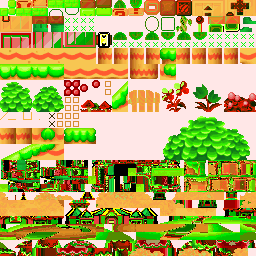
By now we all know how a basic tile system works, but how are tiles particularly managed in this console? Well, there’s a total of 656 KB of VRAM available, and this chunk is split into different banks: Four 128 KB, one 64 KB, one 32 KB and three 16 KB. Programmers are free to fill the banks with drawings and then point the engine where the required data is. Both engines can read from any of these banks, but they can’t access the same one concurrently.
Nonetheless, there are some limitations on how data can be distributed. For instance, the ARM7 can only access two 128 KB banks. At the same time, these two banks can’t store sprites, and ‘sub’ is the only one capable of accessing the last 16 KB bank. The list goes on… but you get the idea.
One last thing, the 3D engine, which we will discuss later on, will access some of these banks to fetch textures.
Background types
Since the days of the Super Nintendo, the PPU has been leaning towards providing more flexibility for building background layers. 14 years later, we found ourselves with a chip that can fetch tiles and apply many affine transformations and if that wasn’t enough, the layer can be ultimately built from a frame buffer.
Before we discuss the different modes the 2D engine can operate to generate backgrounds, let me show you this list which specifies the types of backgrounds the engine can generate:
- Character type group: These background types follow the traditional tile system, the frame is rendered by filling it with tiles.
- Static or ‘Text’ background: An ordinary background. Up to 512x512 pixels wide, 256 colours and 16 palettes. It includes all the typical effects (H/V flipping, H/V scrolling, mosaic, alpha blending) plus an extra ‘fading’ effect. Up to 1024 tiles can be used.
- Affine background: A background with affine transformations. However, it doesn’t allow H/V flipping and can only fetch 256 tiles (one quarter from the maximum). The size of this layer is 1024x1024 pixels wide.
- Affine Extended - Character: Same as affine but restores the full amount of tiles and supports H/V flip.
- Bitmap type group: Instead of processing tiles, the engine treats VRAM as a frame buffer.
- Affine Extended - 256 colours: Inherit all the effects available from the ‘Affine Extended - Character’. The difference is that they are applied on a single 512x512 px bitmap.
- Affine Extended - Direct colour: Similar to the previous one but the frame buffer now supports up to 32,768 colours (15-bit).
- Large screen: Eats up a whole 128 KB chunk of VRAM to render a large 1024x512 px frame-buffer.
- 3D background: Displays the rendering of the 3D engine as a background layer, which is essential to show whatever the 3D engine has processed. While it doesn’t provide a lot of 2D effects, there’re interesting features like horizontal scrolling and alpha blending (with other background layers). Also, it’s the only type that supports up to 262,144 colours (18-bit)
These modes can’t be chosen arbitrarily, instead, the console provides a series of background modes with different combinations set. Nevertheless, you can see here that the Affine Extended mode is available in three different flavours (‘Character’, ‘256 colours’ and ‘Direct colour’). So, in the next section, when you see that X background mode supports the ‘Affine Extended’ type, developers can choose which variant they want.
Background modes
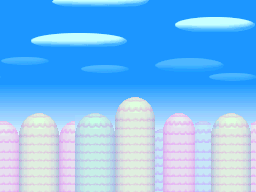
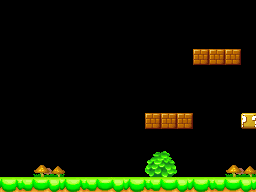

Here the background types are put into action. ‘Main’ and ‘Sub’ provide multiple modes of operation. All of them generate four background layers, however, each layer will have different capabilities depending on the mode activated:
- Mode 0: 4 Static layers.
- Mode 1: 3 Static layers + 1 Affine layer.
- Mode 2: 2 Static layers + 2 Affine layers.
- Mode 3: 3 Static layers + 1 Affine Extended layer.
- Mode 4: 2 Static layers + 1 Affine layer + 1 Affine Extended layer.
- Mode 5: 2 Static layers + 2 Affine Extended layers.
- This is the most common mode used since it’s incredibly flexible.
- Mode 6: 1 3D background layer + 1 Large screen.
- Since there is only space for a single frame buffer, this mode is only available on ‘Main’.
Additionally, in Mode 0 to 5, the ‘Main’ engine can use the first static layer as a 3D background instead. The 3D capabilities will be discussed later on.
Sprites
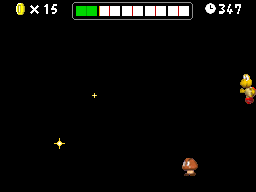
Sprites or ‘Objects’ inherit the same functionality from the GBA’s PPU, but we have two considerable additions.
Firstly, OAM (the region where sprites entries are stored) is now 2 KB wide, enabling to display up to 128 sprites per frame per screen. Thus, 1 KB is allocated per engine.
Secondly, OAM can now reference bitmaps from VRAM as opposed to only using tiles and palettes. This is another departure from the tiling system. In fact, both sprite ‘modes’ can coexist in the same frame, since this option is set on each individual sprite.
Result
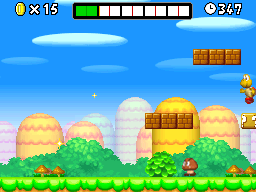
As each layer renders on-the-fly, the final stage is tasked with merging everything and sending it to the selected screen. This is pretty much what happens with previous PPU-based consoles, does that mean we are done here?
Not yet! ‘Main’ still has to fetch a layer from another engine, the most powerful one.
The 3D accelerator
If you played with a Nintendo DS before, you know by now that this console can display a particular amount of 3D graphics. Unlike some GBA games, these aren’t processed by the CPU. Instead, CPU-NTR includes two components that compose the 3D engine. Curiously enough, the design Nintendo applied reminds me of SGI’s RCP.
Revisiting the ‘Background modes’ section, you’ll notice every mode has at least one static background, this is because you can fill that layer with graphics produced by the 3D engine. The only caveat is that only the ‘Main’ can do this, hence one of the reasons Mode 6 is only available for ‘Main’.
Geometry Engine
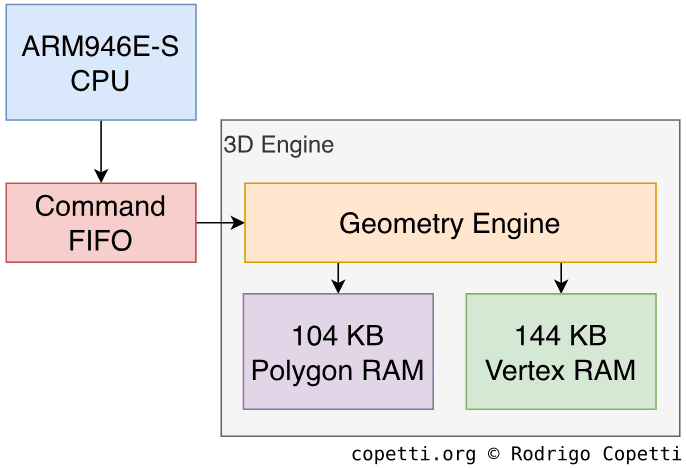
If you read any of the articles from the 5th or 6th generation, you may be wondering… Where’s the SIMD processor? That’s a good question because the ARM9 is not particularly good at vector operations and I don’t think the dedicated divider is enough. That’s why Nintendo embedded a component called Geometry Engine that takes care of vertex transformations, projection, lighting, clipping, culling and polygon sorting, the latter is essential to properly use the transparency features.
This engine has some strict limitations, specifically the count of polygons it can process: There’s an extra 248 KB of RAM available used to store processed geometry, this amount accounts for up to 2048 triangles or 1706 quadrilaterals, although this limit is reduced by using polygon strips (as opposed to individual polys). To get a sense of this number, I suggest checking out the ‘interactive models’ sections in previous articles, you’ll see that it’s a concerning constraint, but don’t forget that the screen resolution of this console is also much smaller… so that compensates a bit.
Anyway, this engine is commanded using a Command FIFO which is filled with data from the CPU or DMA. The FIFO stores 256 entries, yet it’s complemented by another buffer called PIPE that stores four more commands (giving a total of 260).
Rendering Engine
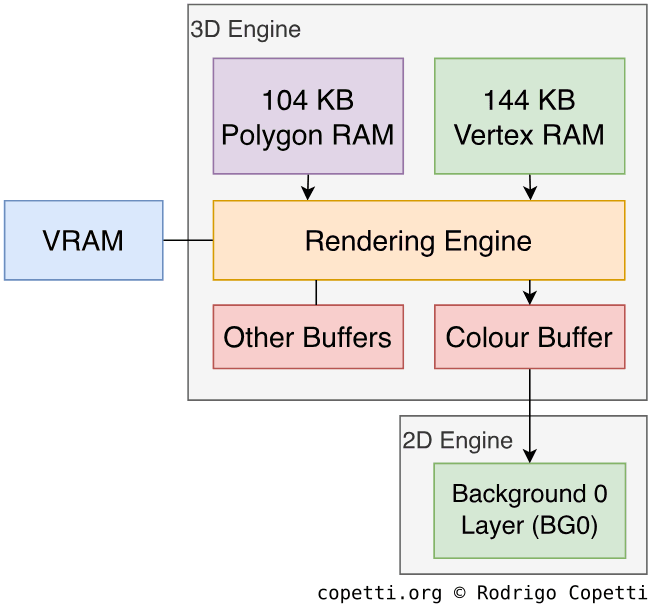
The rendering engine is in charge of converting vectors to pixels (rasterising), colouring them (texture mapping) and applying lighting and other effects. It relies on perspective correction and Gouraud shading for interpolating textures and light, respectively. Moreover, the unit provides modern features like fog, alpha blending, depth buffering (either Z-buffering or a variant called W-buffering), stencil tests and anti-aliasing. However, the latter is very primitive (it just sets the outer edges of polygons as transparent) and it only works with opaque pixels.
The rendering system is a mix of old and new: Instead of rendering to a frame buffer, it employs line buffer rendering, where it fills scan lines (similarly to the 2D engine) and stores the results in a smaller buffer. This is because the 3D engine must work at pace with the 2D drawer.
Without the traditional frame buffer, the rasteriser employs scan-line rendering, traversing each scan-line to process polygon edges found within. Arisotura (the developer of MelonDS emulator) reported that for each quadrangle, the renderer can only fill one span per scan-line [11]. This can be a bit troubling, since the result will get messy if the quad is concave or has crossed edges, for instance.
Regarding effects, the unit also provides shadowing and a distinct feature called Toon Shading (another name for Cel Shading): Even though this unit is not programmable, the lighting parameters can be altered to achieve a cartoony effect.
Result
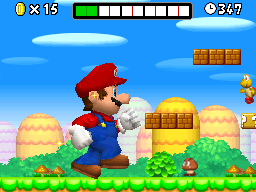
Instead of writing the results back to a frame buffer for display, the rendering engine will write to a block called Colour Buffer which stores up to 48 scan lines. Each scan line is fetched by the 2D engine to fill the BG0 layer in a FIFO manner.
3D rendering starts before the 2D one, enabling the latter to apply transformations on the new layer if required. ‘Main’ also allows to capture the 2D, 3D or combined frame generated, blend it with another frame in VRAM and write the result back to VRAM, which can be displayed afterwards.
In terms of control, the rendering engine also allows altering its parameters during mid-frame, due to employing a mechanism based on double-buffering that keeps a copy of the old state until the current frame finishes being drawn. Thus, no tearing will appear.
Famous comparisons
Some of the first games released for this console attempt to resemble the ones from another console (namely, the Nintendo 64). So I wanted to give a quick summary of why players may see some substantial differences between the two versions:
First example
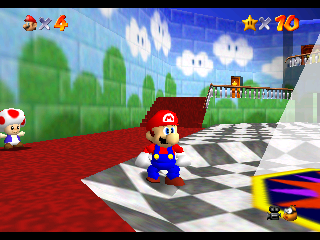
Rendered at 320×240 pixels.
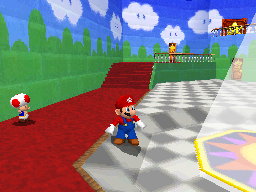
Rendered at 256x192 pixels.
Second example
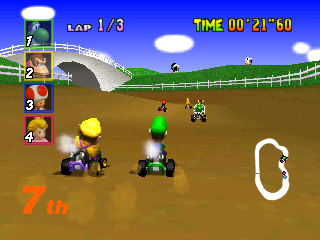
Rendered at 320×240 pixels.
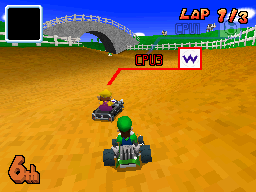
Rendered at 256x192 pixels.
So, to explain what’s happening here, I’ve organised the different explanations based on what some people said on forums:
- NDS’ textures look more blocky → The rendering engine does not employ any filter, so textures are interpolated using the ‘nearest neighbour’ approach.
- NDS’ textures look richer → The rendering engine is not limited by a 4 KB TMEM, there’s instead up to 512 KB of VRAM available (apart from compression mechanisms provided) so naturally more data can be loaded.
- NDS’ models contain pixelated edges → NDS models are rendered at a lower resolution compared to the N64.
- NDS’ textures look distorted when seen from a distance → The rasteriser operates fixed-point coordinates. Low resolution and lack of mip-mapping also attribute to aliasing.
That’s pretty much in a nutshell, for more specialised cases, you’ll have to dive deeper into both engines and possibly disassemble both games to investigate which functions are being used and how.
Interactive models
I’ve updated the wee model viewer to apply ‘nearest neighbour’, allowing you to visualise Nintendo DS models using your GPU.

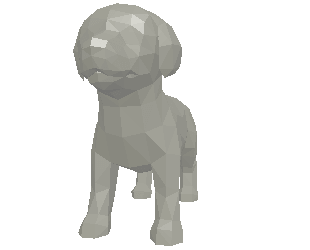
 Interactive model available in the modern edition
Interactive model available in the modern edition750 triangles.

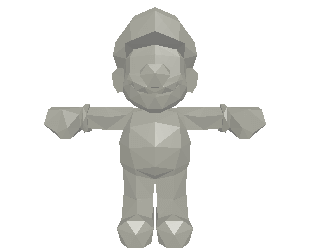
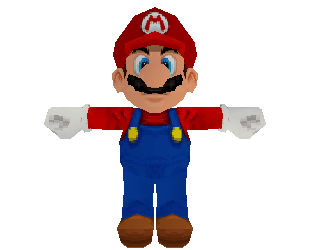 Interactive model available in the modern edition
Interactive model available in the modern edition636 triangles.
Despite the fact we talked about a lot of limitations of the graphics subsystem, lots of games did make really good use of it.
Audio
Most of the audio improvements focus on enhancing those PCM channels that the GBA featured. We’ve seen before that GBA games ultimately prioritised software sequencing over the PSG, and the result was quite impressive.
Consequently, the new audio system features a total of 16 PCM channels, allowing to shift the mixing task to the hardware. PCM samples can either be 8-bit (GBA-style), 16-bit (optimal resolution) or ACPCM (compressed form). In any case, the mixer produces a stereo signal that can be played through the speaker (now stereo) or headphones. It can also write the resulting stereo data to WRAM, enabling the sub-processor (ARM7) to apply some effects such as reverb.
With all being said, does this mean that the Nintendo DS can finally play encoded music (i.e. MP3)? It’s possible (in fact, a lot of homebrew programs implemented some form of it), but audio decoding takes up a lot of bandwidth and processing power [12]. So, audio sequencing still retains its place as the most feasible option.
An eccentric PSG (or two)
Since this console runs GBA games, it should then have something that reassembles the predecessor’s PSG (whether through hardware or software). Well, it so happens the last 6 channels contain a ‘PSG mode’ allowing any of them to synthesise either a pulse or a custom wave; and only two of them can create noise. But GBA games don’t use any of these!
You see, the mixer’s output frequency rate is 32 kHz with a resolution of 10-bit (considerably lower than the quality of the samples fed). Furthermore, it does not perform any form of interpolation to smooth out the loss of precision. These restrictions are not ideal for samples, as it adds noise. Though the actual perception of this phenomenon depends on your auditory capacity (I don’t notice the ‘hiss’ unless I boost the volume and compare it with a 16-bit version side-by-side), besides, it’s still a step forward coming from software-mixed samples with 8-bit resolution. Conversely, the aliasing effect is more problematic with PSG sounds, as downsampling the signal may introduce erroneous harmonics which distorts the original PSG tone. Nevertheless, games like New Super Mario Bros. happily make use of pulse waves for accompaniment, so I wouldn’t consider the PSG completely useless.
Back on topic, how does a GBA game handle all of this? It doesn’t, Nintendo fitted a separate sound system (within the same enclosure) for GBA mode that includes its own channels and mixer that follows the specifications of the predecessor. This way, GBA games won’t be affected by the new mixer’s limitations. Unfortunately, since this subsystem is segregated from the DS one (in other words, it doesn’t output to the DS’s mixer), DS games aren’t able to use it.
Interactive comparison
I’ve constructed this interactive widget that will allow you to compare how the new audio system affected the new generation of soundtracks. Each widget plays the same score but allows you to alternate between the old and new arrangements (I suggest wearing headphones to really notice the difference). Give it a whirl!
GBA: Gyakuten Saiban (2001, JAP only).
NDS: Phoenix Wright: Ace Attorney (2005).
GBA: Mario Kart: Super Circuit (2001).
NDS: Mario Kart DS (2005).
(If you have trouble listening to it, please contact me mentioning the browser and device you are using)
Be as it may, I had to boost the gain of the GBA soundtrack a little bit to normalise the loudness, which tends to affect the signal-to-noise ratio (just something to bear in mind while you switch between the two). Anyway, I hope you got a sense of how the sound subsystem has evolved.
Some struggles
Let me show you some tricky cases now, where the original console had some unique audio features that weren’t straightforward to recreate for this console, but I’ll let you be the judge of that:
SNES: Super Mario Kart (1992).
NDS: Mario Kart DS (2005).
Mega Drive: Sonic 3D Blast (1996).
NDS: Sonic Chronicles (2008).
As you can hear from the first example (especially in the last 10 seconds), it’s a bit hard to compete with the features that the SNES’ S-SMP provided.
I must confess the second one was put on purpose, I mean, what the freck happened there right? As if the new arrangement were initially done for an Atari console instead. If you ask me, I think the Nintendo DS could have handled some sort of FM to PCM re-sampling, so the new minimalistic arrangement may just be a creative approach.
I/O
To make a long story short, I/O is strictly handled by the ARM7. In fact, you won’t see much going on with that CPU apart from passing data around… which is too bad really.
Accessing cartridges and memory
There’s an external memory interface connecting three endpoints: Slot-1 (where Nintendo DS cards go), Slot-2 (where GBA cartridges or accessories go) and the 4 MB of PSRAM (Main memory). The interface can be accessed by both CPUs, but it contains registers that can be modified to prioritise one CPU over the other in case there are two requests from the same bus at the same time.
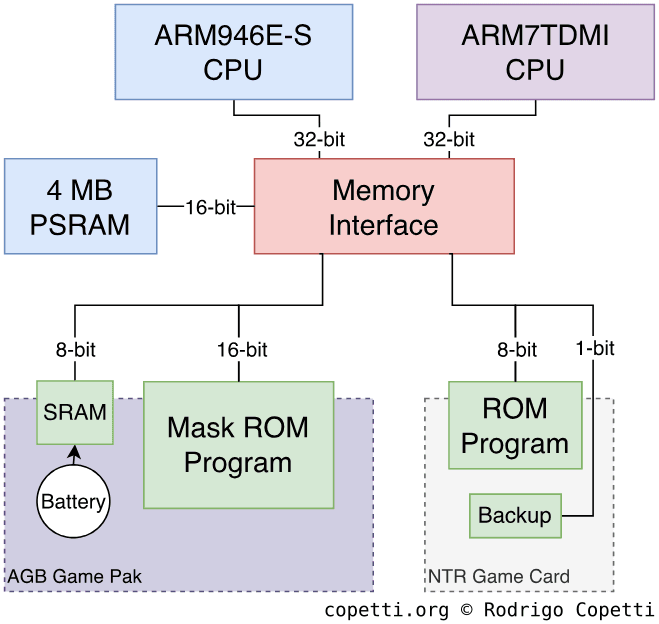
Now, here’s the important bit: DS cards are not memory-mapped, so for either CPU to read game data, the content must be copied to RAM first. This is done by sending to the cartridge blocks of 8-bit commands referencing 32-bit addresses. Afterwards, the data can be manually retrieved by pulling it from a 32-bit register or through DMA. The data bus is 8-bit wide but can reach speeds of up to 5.96 MB/sec (as claimed by Nintendo).
The ‘backup’ chip used for saves (i.e. EEPROM, FLASH or FRAM) is accessed through an SPI bus (serial) which uses its own set of commands and it’s connected to a 24-bit address bus.
The Slot-2 cartridge is memory-mapped using the original pinout, but the addresses are shifted in DS mode to accommodate the hardware that provides expansion functionality (extra RAM, rumble, etc). Just like the GBA, the ROM bus is 16-bit wide and the RAM bus is 8-bit wide.
Peripherals
The ARM7 is also connected to another SPI node interfacing the TouchScreen controller, which operates the bottom screen (it’s the resistive type, requiring the use of a stylus); and the flash memory (which is where the firmware is stored, more details later on).
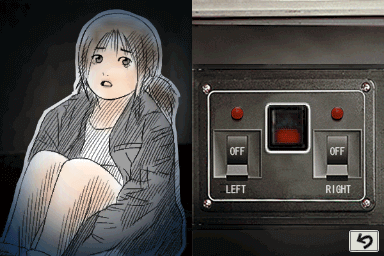
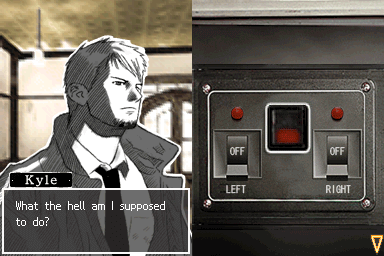
A curious thing about this touchscreen is that apart from detecting the X/Y positions, it can also return the diagonal position (used to calculate the ‘pressure value’, which represents the area where pressure is being applied). Unfortunately, this was never exposed in the official SDK, so as far as I know, no game ended up using this undocumented feature (except homebrew).
Many have pointed out that ‘Hotel Dusk: Room 215’ relied on this feature for one of its puzzles, which required users to use two fingers at the same time. This is not the case, however. After experimenting with the no$gba debugger, the puzzle does not make use of pressure data. Instead, it checks whether the x/y values alternate drastically. The game interprets this effect as if the user had pressed the screen with two fingers.
Finally, in the same stack, we find the real-time clock or ‘RTC’.
Wireless network
Last but not least, the console contains a Wireless controller operating in the 2.4 GHz band that provides some innovative features:
- Internet Play: Enables any game to connect to a LAN network using a standard Wi-Fi connection.
- Multi-card Play: Up to 16 consoles communicate with each other using a proprietary protocol.
- Single-card Play: The game can upload a program to another DS which doesn’t contain the game card.
Operating System
I guess it’s safe to say that by this generation every console now comes bundled with some sort of interactive interface. The NDS still inherits the previous operating system model consisting in lightweight APIs to simplify I/O access, but also provides a minimal user interface to tweak some settings and fiddle with some of its ‘apps’.
Having said that, its operating system is diversified into multiple chips, so let’s start with the ones that are read upon boot.
Entry point
At some point, the ARM7 and ARM9 will need to initialise the hardware and to do this, NTR-CPU includes two different small ROM chips:
- A 4 KB BIOS connected to the ARM9’s bus.
- A 16 KB BIOS connected to the ARM7’s bus.
When the console starts up, each CPU boots from its respective ROM. This is because their reset vector points to each chip (for reference, ARM9’s vector is at 0xFFFF0000 while ARM7’s one is 0x00000000) [13].
Moving forward, each BIOS stores two sets of routines: Boot code and interrupt calls. The latter is no stranger giving the history of the previous console, however the former has increased in complexity: Apart from initialising the hardware, ARM7’s code will also handle security by running some checks on the DS cartridge (if there is one inserted).
After running the boot code, both CPUs will synchronise so they can start acting as a ‘single machine’: It turns out the ARM9 finishes loading way before the ARM7, so the ARM9 sends a 4-bit value to the ARM7, stalls on a semi-endless loop waiting for the ARM7 to respond and once it does, both ‘cross the finish line’ at the same time, that is to say, they are now in-sync.
Window of opportunity
If you have or had a DS, you probably noticed you can only play games if the cartridge was inserted before turning on the console. This is because the ARM7’s BIOS carries out some checks on the cartridge during boot (more details in the last section) and if all the tests pass, ARM7’s game executable is copied to WRAM and ARM9’s one is copied to Main Memory.
If for some reason the executables are not copied (due to the cartridge not being valid or not found during boot), then the game can’t be started and the user will have to reset the console to play one.
Interactive shell
Whether there’s a game or not, the system will finish booting by loading an interactive shell. This is just a program that resides on an external 256 KB Flash memory [14].
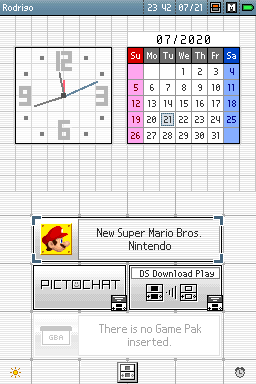
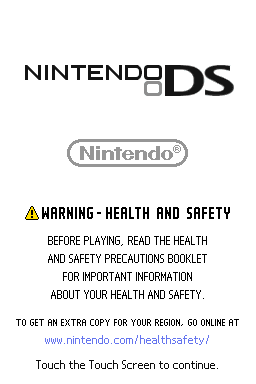
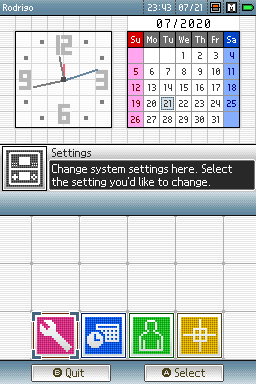
The same chip stores the firmware along with some user settings (language, nickname, birthday, alarm and a welcome message) and some system settings (touchscreen calibration, first startup flag, firmware version and Wi-Fi settings).
The shell is more-or-less the same as the rest of its contemporaries. Users rely on it to start their game, change settings, download a game (using ‘Download Play’) or fiddle with Pictochat: an open chat room that talks with nearby Nintendo DSes.
It’s worth emphasising that both read-only and writable data reside in the same re-writable chip, so it’s theoretically possible to write over the firmware! Luckily (or for obvious reasons), Nintendo protected the upper quarter of the chip (64 KB) from being written by requiring a jumper placed on a point in the motherboard called SL1, which is exposed by removing the battery compartment. Nonetheless, over-writing the rest of the flash memory can still produce catastrophic results [15]!
Updatability
Lastly, this firmware ended up being updated by Nintendo a couple of times (5 to be precise) in an effort to patch some security vulnerabilities. The updates weren’t installable by the user (recall the SL1 protection). Instead, Nintendo embedded the updated firmware in the next lot manufactured.
Games
Oh, there’s a lot to talk about here, primarily because the capabilities of this console did inspire a lot of programmers and artists to come up with really innovative designs. Let’s see…
Medium
This console runs games from three sources, where only two of them can make ‘full’ utilisation of the hardware:
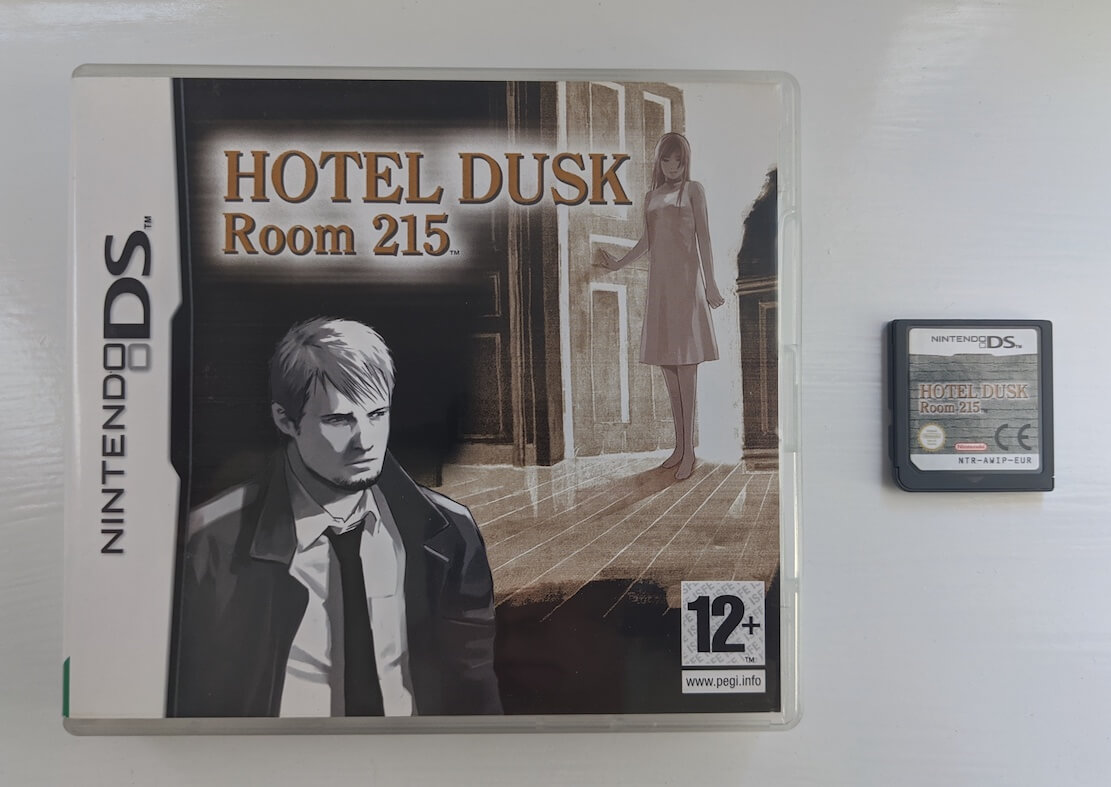
- NDS or ‘Slot-1’ cartridge: This is the main medium used to load native DS games. It’s the only medium used for distribution.
- GBA or ‘Slot-2’ cartridge: This slot enables the console to play Game Boy Advance games natively and, since Slot-1 games can also access this origin, expansion cartridges can be plugged in to enhance NDS games. These provide things like more RAM, more input controls or feedback devices (i.e. rumble pack).
- Download Play or ‘Wireless MultiBoot’: This is an evolved version of the original Multi-Boot which enables another console with an NDS game to upload a program using Wireless communication. The downloaded content is stored in WRAM and booted after the transfer finishes. Since WRAM is volatile, the data will be lost on shut down.
- Authorised retail stores used this function to deploy Download Stations, where users were invited to download game demos as part of their visit to the store.
Program structure
You’ve seen that the BIOS requires to be split up with separate code for ARM9 and ARM7, this is pretty much what also happens with games. Thus, NDS cards are structured in the following areas:
- Header (4 KB): Contains the metadata (location of each executable, serial numbers, etc).
- Secure Area (16 KB): Used for copy protection purposes. We’ll get into more details in the last section of this article.
- Main content (variable size): The rest of the card just contains the executables and game data (graphics, sound, etc). Retail games using Nintendo’s SDK contain their data organised hierarchically with files and directories thanks to a built-in filesystem.
Development ecosystem
For game studios interested in developing games for this console, Nintendo distributed both hardware kits and SDKs with lots of utilities.
The hardware
The devkit, called IS-NITRO-EMULATOR, consisted of a medium-size blue box containing most of the DS’s internal hardware and I/O [16]. This is followed by a thick cable connected to a dummy Nintendo DS case, serving as a ‘controller’ and display. At request, the devkit was enhanced with optional capabilities like audio/video out, Wi-Fi (by default it was emulated using Ethernet) and debugging. I was expecting the latter to be already included but I realised these units could also be used by test teams.
The kit reads DS cards, but a different type with a larger case and swappable backup chips. These cards are flashed using another unit called IS-NITRO-WRITER.
The software
The software kit included utilities for interacting with the devkit, the C/C++ toolchains and the hardware APIs. One point to mention is that the docs are explicit in forbidding any circumvention of their APIs to access the hardware directly: Even though games will run on bare metal, Nintendo won’t approve their distribution if it executes ‘prohibited’ operations. This includes controlling the ARM7 directly, exceeding display resolution or turning off the LCDs.
There are understandable reasons for imposing these norms, such as maintaining quality levels. Although, in my opinion, limiting the ARM7 to I/O tasks was a waste of potential…
Freedom of interaction
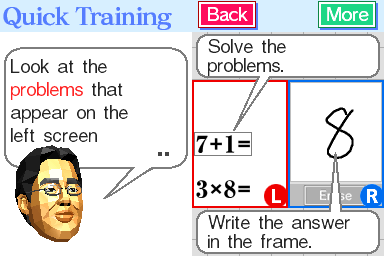
New categories of games attracted audiences beyond the youth circle.
With all the new forms of interaction available, studios had the opportunity to prioritise gameplay experience over graphics.
For the first time in consumer electronics, there was a touchscreen, microphone, Wi-Fi and a real-time clock packaged in the same console. Nevertheless, some games even presented new forms of interaction, such as instructing the user to hold the console sideways.
Network service
After the success of a previous competitor, Nintendo joined the club of online multiplayer and deployed their centralised infrastructure. Games using the ‘Internet Play’ could connect to Nintendo’s servers (called Nintendo Wi-Fi Connection) to enjoy some online gaming.
Anti-Piracy and Homebrew
Even though DS cards weren’t affected by the curse of the compact disc, Nintendo implemented some protection systems to keep control of game distribution.
Security Mechanisms
Let’s take a look at each area:
Encryption system
The Nintendo DS mainly uses a symmetric encryption system to encrypt the communication between the Memory Interface and the Slot-1 card. Before we discuss how encryption is performed, let’s talk about the algorithms used and how the keys (which will be used to perform encryption) are generated.
The ‘Header’ area of the card contains a value called Gamecode (the unique identifier of the game), the memory interface grabs this block to generate the KEY1 and uses it to encrypt further commands sent to the card. KEY1 encryption is based on the Blowfish algorithm.
Afterwards, KEY1 is mixed with the internal clock and some other values of the cartridge header to generate a new key called KEY2. The fundamental difference with KEY1 is that the former uses random values to make it unpredictable. KEY2 encryption relies on multiple XOR and Shift operations to obfuscate the data.
KEY1 and KEY2 are used, at different stages, by the Slot-1 interface to protect its communication with the card. While KEY1 is also used by the ARM7 BIOS to validate the DS card and initialise the card interface.
DS card validation
As we’ve seen before, the BIOS includes some routines that validate the NDS card upon startup. This works as follows:
- The ARM7 BIOS retrieves the chip ID of the cartridge, saves it on RAM and then proceeds to enable KEY1 and KEY2 encryption.
- The first 2 KB of the ‘Secure area’ are copied to RAM in random order. The first 8 B of this chunk stores a string called Secure Area ID, the next values contain some checksums (CRC16 type) and other metadata. All of it comes encrypted with KEY1, and the Secure Area ID is encrypted twice with KEY1 using different parameters.
- The ARM7 BIOS decrypts the Secure Area ID and checks that the decrypted value matches
encryObj. If it does, it means card validation has passed the first test. After this, the string is destroyed to prevent revealing the algorithm. If the validation fails, the 2 KB of Secure Area are filled with garbage, preventing the rest of the card from being read. - The second test consists of retrieving the chip ID again at random times (the seed depends on the internal clock). If the value of chip ID matches the first chip ID stored, the second test has passed.
- Finally, the rest of the Secure area is fetched in random order and re-constructed in RAM. After this, the firmware is executed.
If everything goes well, the firmware will find the required executable of the card in RAM, allowing the user to boot up the game. Otherwise, the game selector will be shown greyed out.
Download Play protection
Programs received via Download Play must be signed by Nintendo using an RSA signature (only Nintendo knows the private key).
This check is performed by the firmware.
Defeat
If you were a homebrew user back then you probably ran across tons of options available to run this software. The truth is, before all the current cracks were discovered, hackers had a hard time circumventing Nintendo’s complex anti-piracy system.
Existing Slot-2
Because the GBA subsystem still executes cartridges without any protection implemented (aside from trademark tricks), existing GBA flashcarts were still compatible with the NDS. This enabled to run GBA homebrew, which worked fine if you didn’t mind missing out on all the new functionality exclusive to DS games.
As always, flash cartridges also enabled to run pirated ROMs, but since Nintendo couldn’t change the protection system of the GBA (as it could potentially render existing games unusable), the company just had to deal with it.
Enhanced Slot-2

After more clandestine research was conducted on the DS BIOS and firmware, it was ultimately discovered that the execution of an NDS card could be redirected to the GBA slot. The NDS card wasn’t cracked yet, but this method allowed to provisionally bypass the security system of Slot-1 cards and execute Slot-2 programs in DS mode.
Thus, a new generation of Slot-2 flashcarts appeared on the market. They embed ARM9 code that is executed once bootstrapped from Slot-1. The bootstrap itself was accomplished using one of these methods discovered (called ‘pass-through methods’):
- Using a PassMe card: This requires a genuine Slot-1 card. PassMe is some sort of adapter sitting between the Slot-1 and a genuine game. It basically tampers the header sent from the card to the console to trick the console into executing Slot-2 code, loading the Slot-2 cartridge in the process.
- Using WifiMe: Requires a PC with a compatible Wi-Fi card. With the use of a modified driver, it’s possible to broadcast a customised program that the DS can download through the use of Download Play [17]. Once booted up, it would redirect execution to Slot-2. This exploited the fact the firmware didn’t check the RSA signatures of particular areas of the binary.
- Using FlashMe: A permanent solution. By chaining a previous method and bridging the
SL1terminal, it was possible to run a homebrew program that could write over the firmware to boot from Slot-2 if a flash cartridge was present. This hack also removed the digital signature check to boot homebrew from Download Play as well.
As expected, Nintendo produced DS revisions that included an updated firmware that patched these tricks. So hackers tried to find other methods that focused on more BIOS exploitation (which is difficult to patch).
Native Slot-1
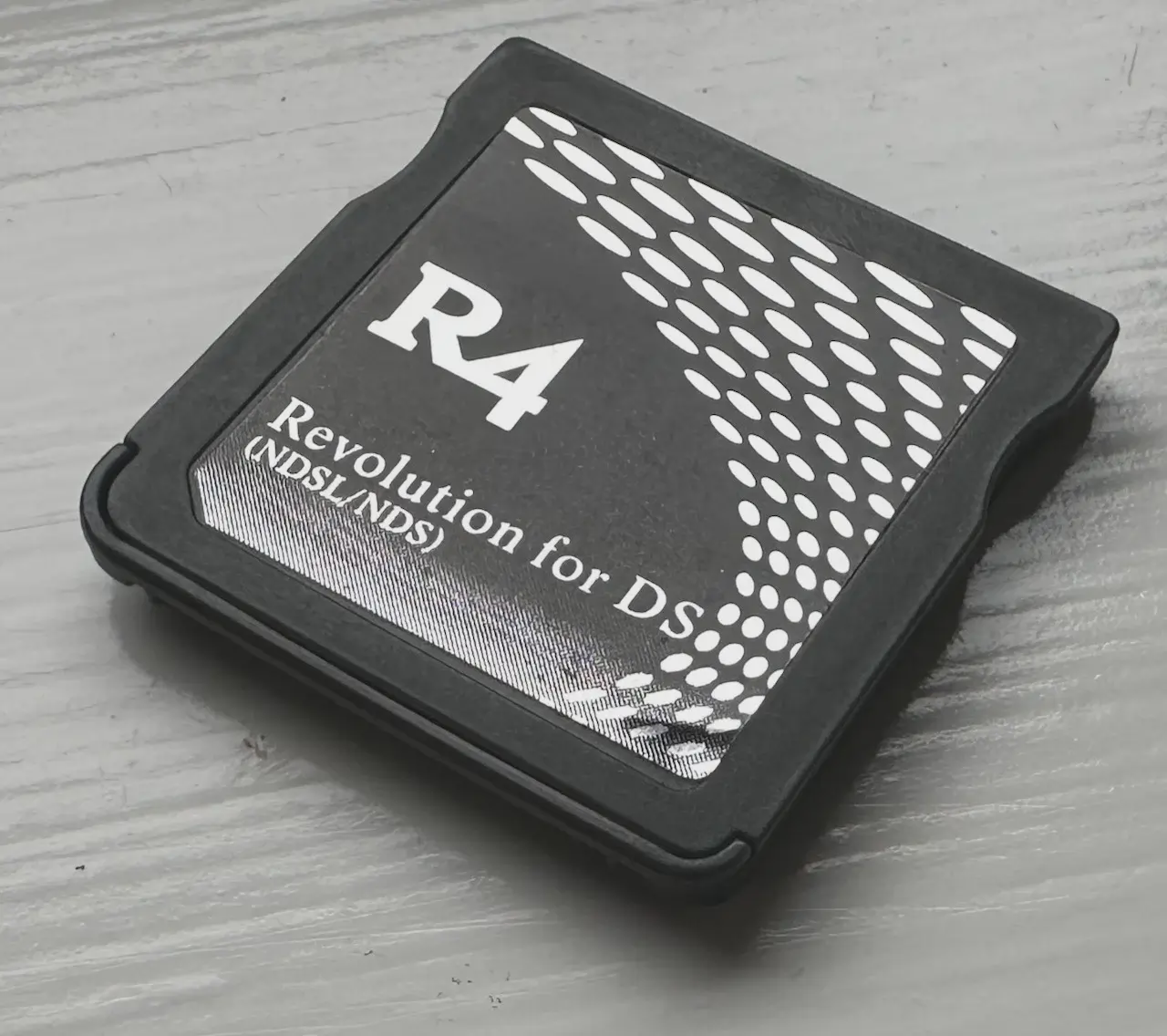
Martin Korth, the developer of the famous Nintendo DS emulator called ‘NO$GBA’, later managed to extract the BIOS and reverse engineer the Slot-1 security. With this, newer tools and documentation revealed the true mechanisms of Nintendo DS security. As you have seen in this article, the encryption system worked as long as nobody reversed it (this is a limitation of symmetric encryption systems, unlike asymmetric encryption systems, such as RSA where the private key is never stored).
Anyway, these led to a massive influx of plug-and-play Slot-1 flashcards which worked on any type of console and ran Nintendo DS programs natively. The pass-through method was also improved with the debut of ‘NoPass’ cards which allowed to load Slot-2 flashcarts without requiring a genuine game.
Since the encryption system couldn’t be altered without making breaking changes that affect all existing retail games, Nintendo ultimately lost this battle. The only thing left was to pursue the legal route, just like they did with their previous console.
Observations
This is my personal opinion, but I was astonished at how simple it was to acquire and use flashcards compared to other homebrew methods from previous consoles. In older articles, I’ve described that if users ultimately wanted to run homebrew programs or pirated games, they would have to get down the rabbit hole and follow some cumbersome method.
In the case of the DS, however, flashcards were literally sold just like retail games (albeit with a different ‘style’ of marketing) and I bet it was truly concerning for game studios to see how painless was to resort to piracy.
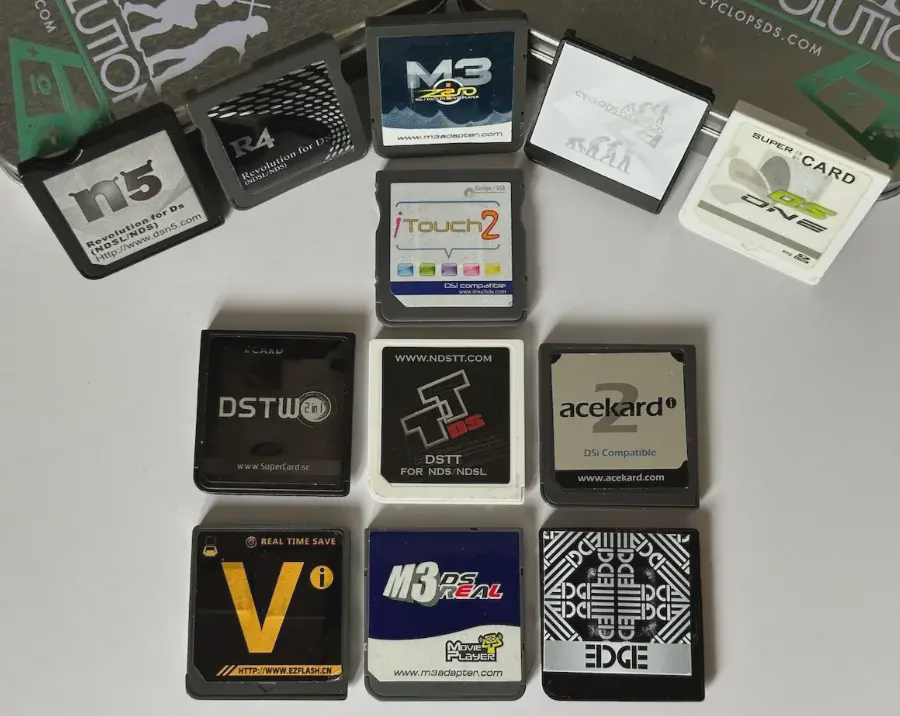
Another thing, it’s surprising to see the amount of branded flashcards (aside from all knock-offs) that appeared on the market. If you look at it from a technical perspective, flashcards are just SD adapters [18]. But as this industry progressed, some manufacturers took extra steps to design a better software package (referred to as ‘kernel’ or ‘firmware’) or even house rather unusual hardware. For instance, the ‘N-Card’ offered embedded storage; and the ‘SuperCard DSTwo’ bundled an Ingenic Jz4740 CPU (MIPS-compatible) running at 360 MHz! [19] I haven’t seen this passion since expansion cartridges.
That’s all folks
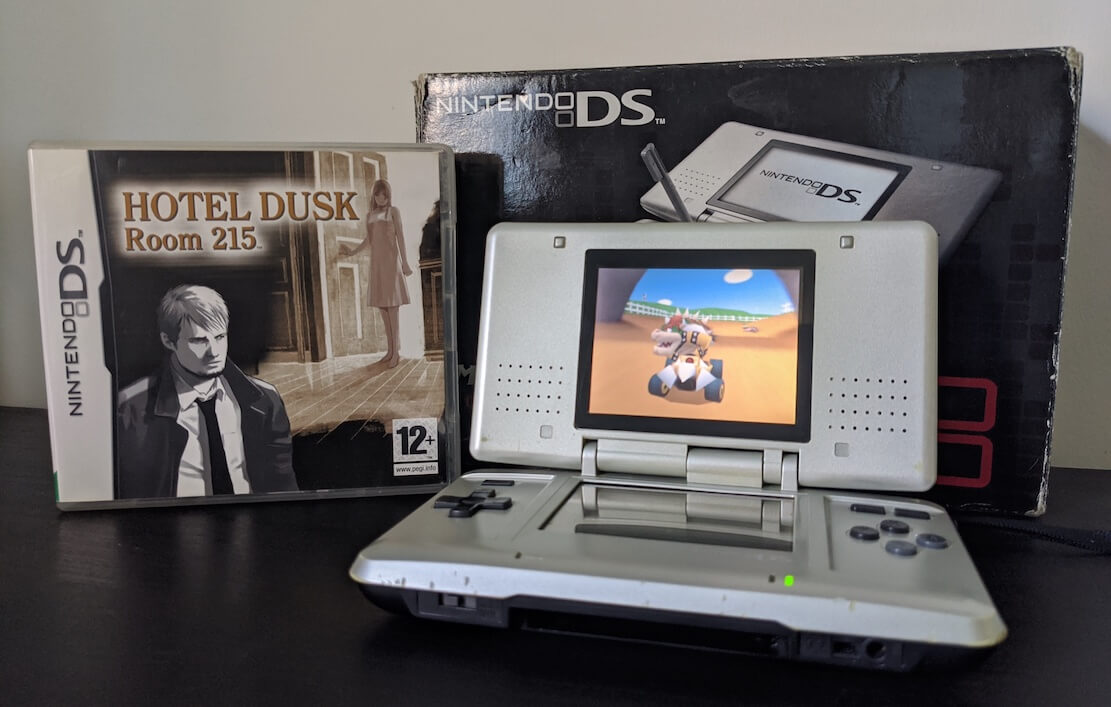
I actually sold my first one a long time ago… I wonder where it’s now.
Alrighty! I think I covered 99% of what I wanted to talk about…
I hope I didn’t sound too harsh when criticising some sections. Don’t get me wrong, I still think this console is a good piece of engineering! But there are some defects which make me wonder if it’s really a cost-effective compromise, or part of a design flaw. Truth to be told, that didn’t stop 11-year-old me from wanting one back then. So I guess that’s pretty much ‘mission accomplished’ for the company!
I would also like to thank friends and the MelonDS community for taking the time to check out the draft and pointing out lots of corrections. The Nintendo DS allowed me to mention many topics I’ve been interested in writing about for a while and I was afraid I would end up biting off more than I could chew, but hopefully you’ve enjoyed this article.
Until next time!
Rodrigo


